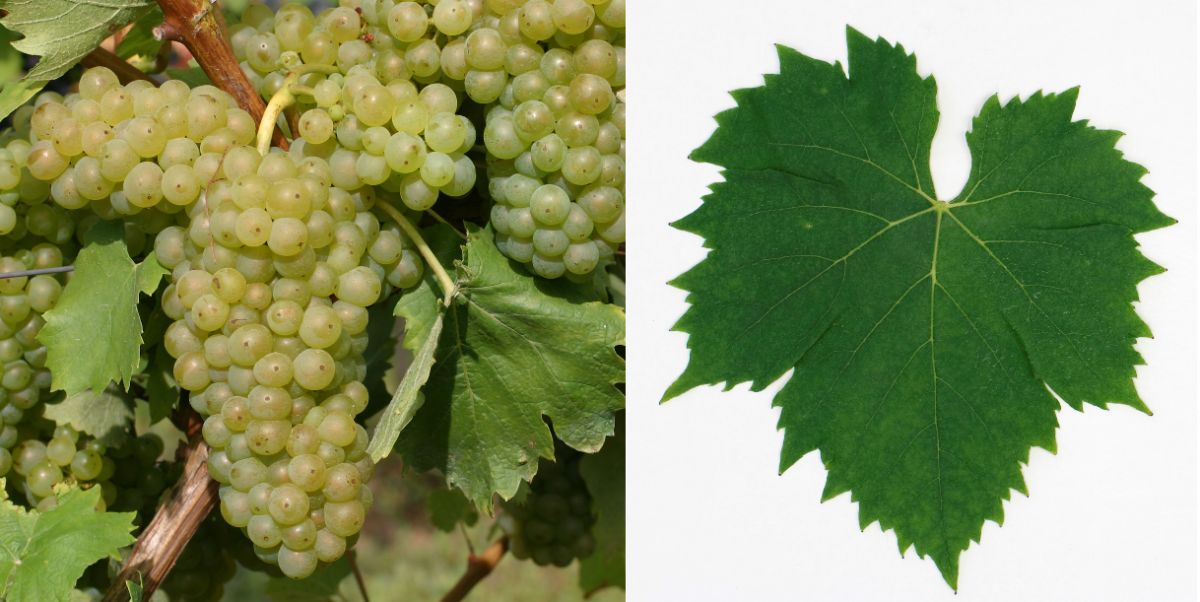The white grape variety originates from Croatia (old Austria) or, more broadly, from the catchment area of the Danube. There are about 80 synonyms, which testify to the vine's great age and wide distribution. The most important ones, grouped alphabetically by country, are Kleinriesling, Wälschriesling (Germany); Meslier, Meslier de Champagne (France); Riesling Italico, Rismi, Risli (Italy); Graševina, Graševina Bijela, Laski Rizling, Riesling Italico, Taljanska Graševina (Croatia); Welscher, Welschriesling (Austria); Riesling Italian (Romania); Welschriesling (Switzerland); Laški Rizling (Serbia), Rizling Vlašský (Slovakia); Laški Rizling (Slovenia); Borba (Spain); Ryzlink Vlasský(Czech Republic); Nemes Olasz Rizling, Olasriesling, Olasz, Olasz Risling, Olaszrizling, Olasz Rizling, Olasz Rizlingi, Olasz Szoeloe (Hungary). It must not be confused with the varieties Aligoté, Greco, Petit Meslier, Pignoletto and certainly not with Riesling, despite seemingly suggestive synonyms or morphological similarities. Welschriesling was a crossing partner of the new varieties Bussanello, Cosmo, Dalmasso 12-40, Flavis, Goldburger, Goldriesling (2), Italica, Julie, Nosztori R izling, Pátria, Pelso, Pliniana, Rani Rizling and Șarbă.

According to DNA analyses carried out in 2021, it is a presumably natural cross between Coccalona Nera x unknown father variety. There are several hypotheses about its origin. Many German synonyms point to Germany or Austria, although there is no genetic connection to Riesling. The part of the name "welsch" means "foreign" or "foreigner" and could therefore also mean that the variety was first introduced into the German-speaking countries. France, Italy and Romania were also mentioned as other countries in the past. According to DNA analyses carried out in 2003, the Borba variety grown in the Ribera del Guadiana region is surprisingly identical, which is why Spain could also be a possibility. Taking all the facts into account, the Swiss biologist Dr. José Vouillamoz names Croatia or, more widely, the Danube region as the probable origin and therefore proposes Graševina as the main name. At Wine lexicon, however, the variety is listed under the name Welschriesling, which is common in German-speaking countries.
The late-ripening, high-yielding vine is sensitive to frost and susceptible to fungal diseases such as powdery mildew, downy mildew and botrytis. It produces acidic white wines with aromas of nuts and hay. In Austria, it is the third most cultivated grape variety with 3,338 hectares (statistics ÖWM 2017) and is particularly popular as a light, fruity summer wine. The wine is also popular for blends with mineral or soda water as so-called Gespritzter, as well as for the production of sparkling wine. In Styria, it is mainly used to make sparkling white wines that can usually be drunk young. Especially in Burgenland, the variety is suitable for higher predicates such as Beerenauslese and Trockenbeerenauslese. In Germany, no stocks have been reported recently.
Welschriesling is cultivated in many countries in Central and Eastern Europe. These are Italy (1,259 ha), Croatia (4,459 ha), Northern Macedonia (270 ha), Romania (1,437 ha), Serbia (2,037 ha), Slovakia (456 ha), Slovenia (1,935 ha), Spain (1,064 ha), the Czech Republic (1,114) and Hungary (3,933 ha) as well as Italy (1,568 ha). There are further stands in Brazil (188ha), China (3,000ha) and Canada. In 2016, a total of 24,384 hectares of vines were reported, with an extremely downward trend (in 2010 it was 61,200 ha). It is thus ranked 35th in the world grape variety ranking (Kym Anderson statistics).
Source: Wine Grapes / J. Robinson, J. Harding, J. Vouillamoz / Penguin Books Ltd. 2012.
Images: Ursula Brühl, Doris Schneider, Julius Kühn-Institut (JKI)
Voices of our members

The wein.plus encyclopaedia is a comprehensive, well-researched reference work. Available anytime and anywhere, it has become an indispensable part of teaching, used by students and myself alike. Highly recommended!
Dominik Trick
Technischer Lehrer, staatl. geprüfter Sommelier, Hotelfachschule Heidelberg